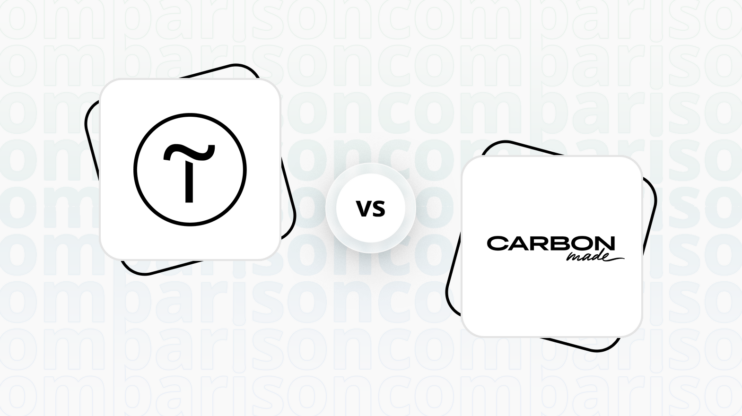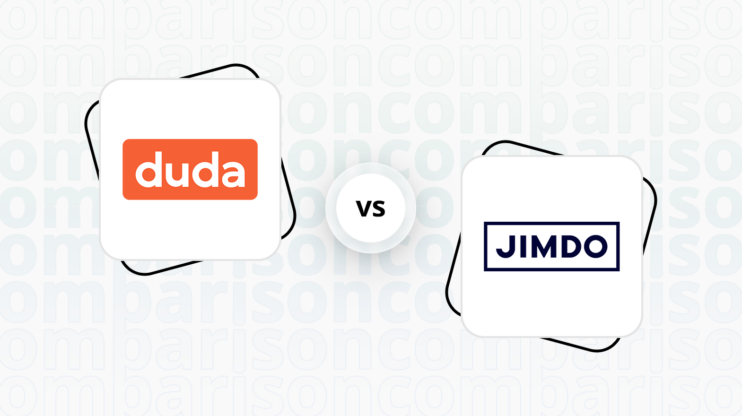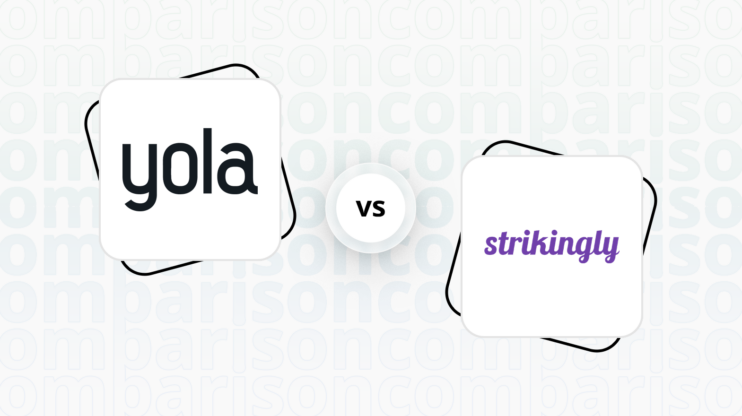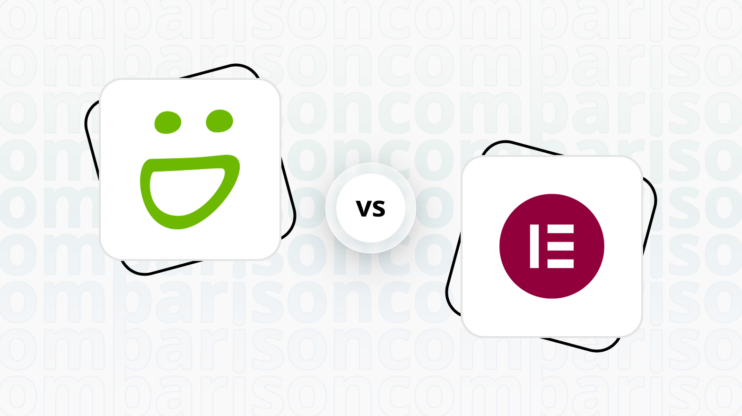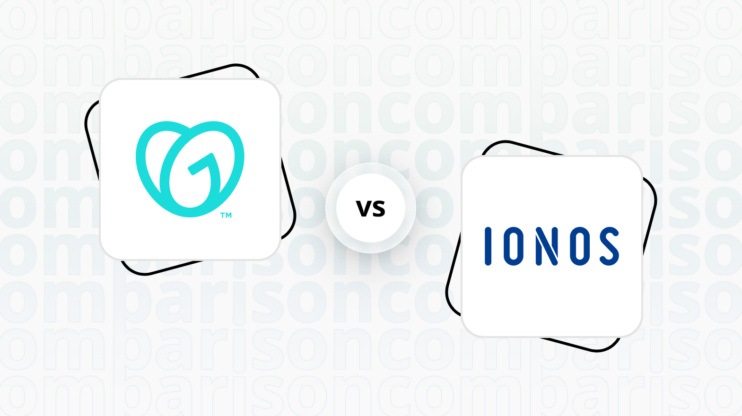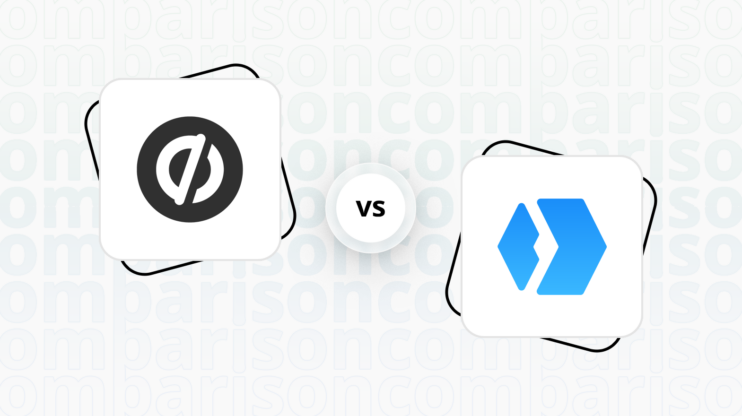Final verdict
WordPress and Adobe Portfolio both offer unique strengths, but they cater to different user needs.
-
WordPress (Overall Grade: 7.1/10)
is a versatile open-source CMS that excels in customization, extensive plugin support, and comprehensive ecommerce capabilities through WooCommerce. It is ideal for users who need a flexible platform for various types of websites, including blogs, business sites, and online stores. When comparing WordPress vs Adobe Portfolio, WordPress stands out for its extensive design functionalities, robust marketing features, and superior user management system. -
Adobe Portfolio (Overall Grade: 5.5/10)
is tailored for creative professionals looking to showcase their work with minimal fuss. It offers a user-friendly interface, seamless integration with Adobe Creative Cloud, and visually appealing templates. In the WordPress vs Adobe Portfolio comparison, Adobe Portfolio is the preferred choice for photographers, graphic designers, and artists who prioritize ease of use and a polished online presence over extensive customization and ecommerce functionalities.

|

|
|
|---|---|---|
|
Design functionalities & templates |
9.0 |
7.4 |
|
Ease of use |
7.2 |
8.7 |
|
Ecommerce |
8.4 |
0.0 |
|
Website Editors |
8.5 |
7.4 |
|
Product testing options |
8.1 |
7.6 |
|
Price |
5.9 |
7.7 |
|
Hosting quality |
0 |
7.0 |
|
Website speed optimization |
6.5 |
6.2 |
|
Plugins and integrations |
8.8 |
6.7 |
|
Marketing features |
8.0 |
3.7 |
|
Customer support |
5.0 |
7.3 |
|
Security |
6.7 |
8.1 |
|
AI capabilities |
6.1 |
0 |
|
User Management |
8.8 |
3.0 |
Best for ecommerce
 8.4
8.4
 0.0
0.0
Verdict
: WordPress is the clear winner for ecommerce, offering extensive features and flexibility, while Adobe Portfolio does not support ecommerce functionalities.
-
WordPress
: With its WooCommerce integration, WordPress provides a robust ecommerce solution. It supports multiple payment gateways, abandoned cart recovery, and extensive plugin options for customization. This makes it ideal for businesses looking to build a comprehensive online store. In the comparison of WordPress vs Adobe Portfolio, WordPress scores 8.4 for ecommerce. -
Adobe Portfolio
: Designed primarily for showcasing creative work, Adobe Portfolio lacks ecommerce capabilities. It does not offer product page customization, payment processing, or ecommerce-specific templates. Therefore, it scores 0.0 for ecommerce in the WordPress vs Adobe Portfolio comparison.
Best for informational & business websites
 9.2
9.2
 7.4
7.4
Verdict
: WordPress is the superior choice for informational and business websites due to its extensive customization options, vast plugin library, and robust community support. Adobe Portfolio, while excellent for creative professionals, lacks the flexibility and scalability needed for broader business applications.
-
WordPress
: With a score of 9.2, WordPress excels in providing a highly customizable platform suitable for a wide range of informational and business websites. Its open-source nature allows for extensive design and functionality customization through themes and plugins. WordPress is ideal for users who need a flexible, powerful CMS that can grow with their business needs. -
Adobe Portfolio
: Scoring 7.4, Adobe Portfolio is tailored for creative professionals looking to showcase their work. It offers a user-friendly interface and seamless integration with Adobe Creative Cloud, making it easy to create visually appealing portfolios. However, its limited range of plugins and integrations makes it less suitable for more complex business websites. When comparing WordPress vs Adobe Portfolio, Adobe Portfolio is best for creatives who prioritize ease of use and design simplicity.
Detailed comparison
Design functionalities & templates
Design FunctionalitiesRepresents how well each platform allows for creative design and customization of websites.Score Components:
- Template Variety (30%): Range and quality of design templates.
- Customization (30%): Flexibility and options for design alterations.
- User Interface (20%): Ease and intuitiveness of the design process.
- Responsiveness (10%): Adaptability to different devices and screen sizes.
- Innovation (10%): Unique design features and tools.
 9.0
9.0
 7.4
7.4
🏆
Winner: WordPress.
If you’re looking for a platform that offers more creative control, a wide array of design features, and extensive customization options, WordPress is the preferred choice.
WordPress offers an extensive variety of templates and designs, catering to a wide range of website types beyond just blogs or ecommerce. Its open-source nature allows for high customization and creative freedom, appealing to diverse user needs. While WordPress itself doesn’t sell premium templates, numerous third-party theme shops offer sophisticated and specialized design choices, expanding the possibilities for users.
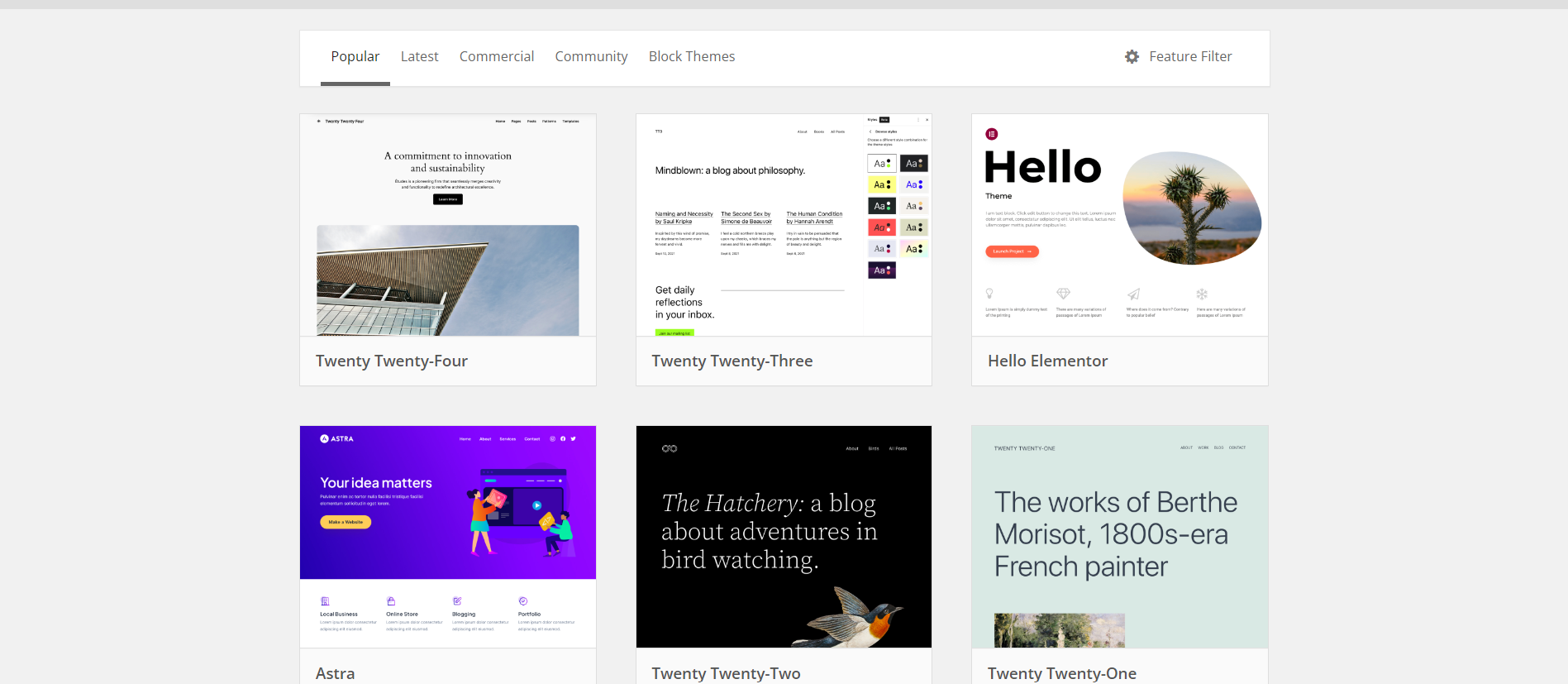

Compared to WordPress, Adobe Portfolio offers a selection of customizable templates designed for creatives across various fields, such as photography, graphic design, and web design. These templates are responsive and tailored to showcase creative work effectively across all devices. With the intention of adding more layouts over time, Adobe Portfolio provides a flexible foundation for users to personalize and present their projects in a polished manner.


Get a head start on website creation with AI
Create a custom website tailored to your business needs 10X faster with 10Web AI Website Builder!
Ease of use
Ease of useReflects the platform’s overall user-friendliness.Score
Components:
- Learning curve (40%): Quickness and ease of getting started.
- Interface design (30%): Simplicity and intuitiveness of layout.
- User guidance (20%): Quality of tutorials and support.
- Flexibility (10%): Adaptability to various user skills.
 7.2
7.2
 8.7
8.7
🏆 Winner: Adobe Portfolio
. With a score of 8.7, Adobe Portfolio is designed with a user-friendly interface that caters to creatives looking to showcase their work with minimal fuss. WordPress, scoring 7.2, offers great flexibility and power, but it can be less intuitive for beginners compared to simpler website builders.
Learning Resources
🏆 Winner: WordPress
. Both platforms offer extensive learning resources, but WordPress stands out with its vast array of detailed documentation, community forums, online tutorials, and courses offered by both WordPress and third-party providers.
For ecommerce
EcommerceMeasures the platform’s effectiveness in supporting online business activities.Score Components:
- Ecommerce themes and templates (20%): Variety and design of templates.
- Product management (25%): Ease of managing and organizing products.
- Payment options (25%): Variety and convenience of payment methods.
- Ecommerce features (20%): Features for managing an ecommerce store.
- Integration (10%): Compatibility with external e-commerce tools and services.
 8.4
8.4
 0.0
0.0
When it comes to ecommerce, WordPress and Adobe Portfolio cater to different needs. WordPress, with its WooCommerce plugin, provides a comprehensive ecommerce solution, while Adobe Portfolio, designed for showcasing creative work, does not offer ecommerce capabilities.

|

|
|
|---|---|---|
|
Ecommerce themes and templates |
9.2 |
0.0 |
|
Product page customization |
9.0 |
0.0 |
|
Payment processing and commissions |
7.5 |
0.0 |
|
POS capabilities |
6.5 |
0.0 |
|
Payment gateways |
8.5 |
0.0 |
|
Product numbers |
7.0 |
0.0 |
|
Additional ecommerce features |
8.0 |
0.0 |
WordPress ecommerce features:
- WooCommerce Integration
- Multiple Payment Gateway Support
- Abandoned Cart Recovery
- Ecommerce Analytics
- SEO Optimization Tools
- Extensive Plugin Ecosystem
WordPress does not handle payments directly but offers plugin options for payment processing. Popular gateways include PayPal, Stripe, Authorize.Net, and Square. Choose a gateway based on transaction volume, currencies, fees, and security. Plugins integrate gateways with WooCommerce for a user-friendly setup. Consider options for recurring payments, offline payments, and fraud prevention. Research, read reviews, and start small, scaling as needed.
WooCommerce on WordPress offers extensive customization for eCommerce product pages, balancing plugins, page builders, and custom coding. Essential elements include quality product images, detailed descriptions, and effective add-to-cart buttons. Advanced features like product tabs, upsells, and related products are customizable. Tools like Elementor and the Ultimate Product Catalog plugin enhance functionality, but heavy plugin use may affect site performance.
Overall, there are hundreds to potentially thousands of ecommerce and WooCommerce specific themes and templates for WordPress, both free and premium, with the number constantly changing due to new themes and updates.
Adobe Portfolio ecommerce features:
Adobe Portfolio does not have any ecommerce features. It does not offer product page customization features, payment processing capabilities, or ecommerce specific templates. Adobe Portfolio is primarily designed for creative professionals to showcase their work and does not cater to ecommerce needs.
Website Editors
Website EditorsEvaluates the platforms’ website building and editing capabilities.Score Components:
- Customization tools (40%): Range and power of editing features.
- Editor usability (30%): User experience within the editor.
- Design flexibility (20%): Freedom in layout and design changes.
- Update and maintenance ease (10%): Simplicity of updating and maintaining the site.
 8.5
8.5
 7.4
7.4
🏆
Winner: WordPress
. WordPress, with a score of 8.5, offers a user-friendly interface with block-based editing, extensive styles customization, template management, page editing/creation, distraction-free modes, versatile saving options, and accessibility for users of varying skill levels. It also provides a WYSIWYG interface and a wide range of blocks and widgets for creating websites.
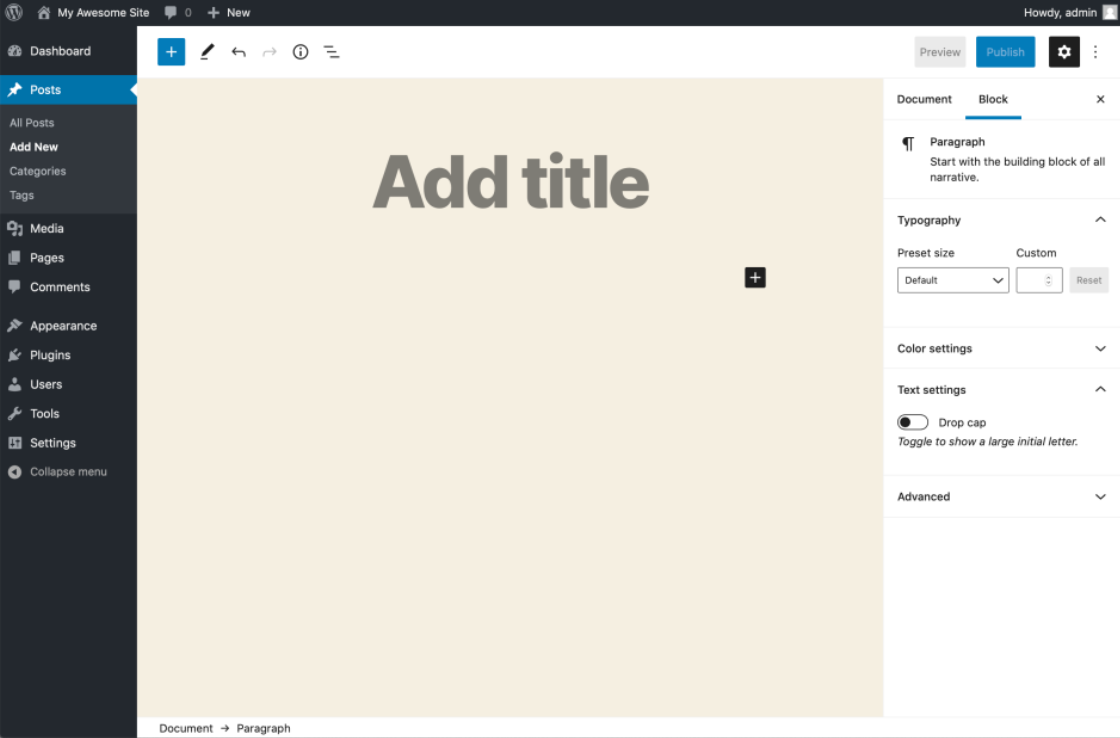
Adobe Portfolio, scoring 7.4, offers a user-friendly website builder editor designed for creatives to showcase their work. It allows for the integration of high-quality images and videos, offers a variety of responsive templates tailored to different creative fields, and provides seamless Adobe Creative Cloud integration. However, it has a limited range of external integrations, widgets, and add-ons, focusing primarily on creating dynamic galleries and image collections.
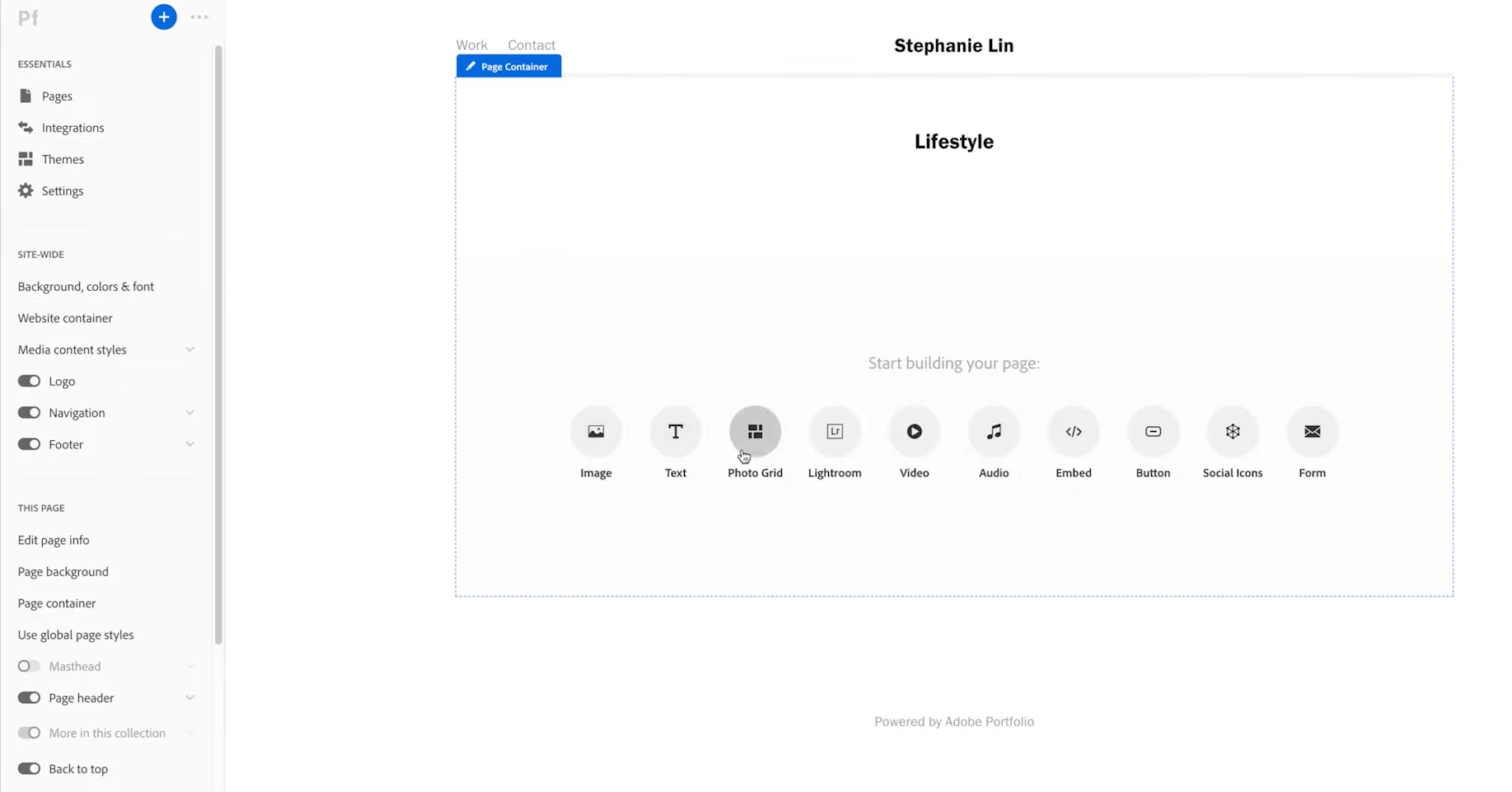
Mobile editor/app
 8.1
8.1
 0
0
🏆
Winner: WordPress
. WordPress offers a mobile editor app that allows users to manage their website on the go. You can create and edit posts, manage comments, schedule content, and analyze website traffic from your phone or tablet. While it offers convenience and basic functionality, it has some limitations compared to the web-based editor, including fewer advanced options, restricted code access, and limited design customization.
On the other hand, Adobe Portfolio does not have a mobile editor app, making WordPress the clear winner in this category.
Product testing options
Product Testing OptionsAssesses the options for trying out platform features before commitment.Score Components:
- Trial quality (40%): Extent and usefulness of the trial or free version.
- Feature accessibility (30%): How many features are available to test.
- Trial duration (20%): Length of the trial period.
- Ease of transition (10%): Smoothness of moving from trial to paid plans.
 8.1
8.1
 7.6
7.6
Overall Result
:
WordPress scores higher with 8.1 compared to Adobe Portfolio’s 7.6
. WordPress, being an open-source CMS, allows users to use and test its features for free. However, it does not offer a trial version or the possibility to test premium features. On the other hand, Adobe Portfolio does not have a free version but offers a trial version where users can explore all features and even create a portfolio website. However, users cannot publish their website without subscribing to a plan. Adobe Portfolio also offers a 14-day refundable period for further testing.

|

|
|
|---|---|---|
|
Free Plan |
Yes (open source software) |
No |
|
Trial Duration |
No |
Yes |
|
Testing Premium Features |
No |
Yes, during trial and 14-day refundable period |
|
Money Back Guarantee |
No payments required |
14-day money back guarantee |
Price
PriceLooks at the cost-effectiveness and value for money of each platform.Score Components:
- Plan value (40%): What each pricing tier offers.
- Transparency and clarity (30%): Clearness of pricing structures.
- Flexibility of plans (20%): Range of options to suit different budgets.
- Hidden costs (10%): Additional expenses not included in the plan.
 5.9
5.9
 7.7
7.7
Adobe Portfolio offers a more straightforward pricing structure, while WordPress is free but requires separate hosting and domain services.

|

|
|
|---|---|---|
|
Free |
Free Plan ($0/month): WordPress is open source software that is free. WordPress does not provide hosting services; so, it is necessary to purchase a domain, web hosting, and website builder subscriptions separately. While WordPress lacks built-in ecommerce, plugins like WooCommerce offer a solution. WordPress offers an extensive variety of templates and designs. WordPress lacks a built-in AI-assisted builder, but its open-source nature allows for an ecosystem of plugins and themes incorporating AI for website building. |
No offering at this amount. |
|
$0-$10 |
No offering at this amount. |
Creative Cloud – Photography ($9.99/month): Up to 5 Portfolio sites with fonts from Adobe Fonts, and with access to Photoshop and Lightroom and 20GB storage. Value for price: 7.0 |
|
$50+ |
No offering at this amount. |
Creative Cloud – All Apps ($59.99/month): Up to 5 Portfolio sites with the entire collection of Adobe creative apps, including Photoshop, Illustrator and InDesign, with 20 GB storage. Value for Price: 8.5 |
location. As a result in rare cases the prices displayed here can differ from the ones you see on their
websites.
Hosting quality
Hosting
qualityExamines the reliability and performance of the hosting solutions.Score Components:
- Uptime (40%): Consistency and reliability of website availability.
- Speed (30%): Loading times and performance.
- Bandwidth and storage (20%): Sufficiency of resources provided.
- Data centers (10%): Quality and distribution of hosting infrastructure.
 0
0
 7.0
7.0
🏆
Winner: Adobe Portfolio
Adobe Portfolio offers cloud hosting with 20GB of storage and data centers in three locations. WordPress, on the other hand, does not directly provide hosting services, so users must find their own hosting provider. This gives Adobe Portfolio a clear advantage in terms of hosting quality.

|

|
|
|---|---|---|
|
Do they offer hosting? |
No |
Yes |
|
Data Centers: |
Depends on hosting provider |
3 globally: US, Ireland and Japan |
|
Type of hosting: |
Depends on hosting provider |
Cloud Hosting |
|
Uptime: |
Depends on hosting provider |
Not published |
|
Uptime Guarantee: |
Depends on hosting provider |
No |
Website Speed Optimization
Website Speed OptimizationEvaluates optimization of website loading timesScore Components:
- PageSpeed Score (30%): Google’s score indicating performance optimization.
- Loading Time (30%): The average time until a website is fully interactive.
- Mobile Optimization (15%): Optimization effectiveness for mobile devices.
- Resource Optimization (15%): Optimizing images, scripts, and other heavy resources.
- CDN Usage (10%): Use of CDN to enhance speed across geolocations.
 6.5
6.5
 6.2
6.2
🏆 Winner: WordPress
Both WordPress and Adobe Portfolio have their own strategies for website speed optimization, but WordPress’s extensive resources and tools for enhancing Core Web Vitals give it an edge over Adobe Portfolio.

|

|
|
|---|---|---|
|
Focus |
Extensive resources for optimization |
Image optimization, SEO and Meta Tag Configurations |
|
Performance Tools |
Core Web Vitals, WP Rocket, Hummingbird |
Not disclosed |
|
Key Strategies |
No specific strategy, but numerous resources available |
Image optimization, SEO and Meta Tag Configurations |
|
Load Times |
Varies widely, dependent on optimization |
Varies depending on design choices and content volume |
|
Page Speed Scores Range |
Scores vary; influenced by apps, images |
Varies depending on design choices and content volume |
|
Core Web Vitals Improvement |
Extensive resources for CWV enhancement |
Not disclosed |
WordPress, an open-source content management system, does not have a specific strategy for website speed optimization. However, it provides valuable resources for enhancing your website’s Core Web Vitals (CWV): analyze CWV, choose a reliable host, optimize images, minimize plugins, use lazy loading, and employ a CDN. Tools like Core Web Vitals, WP Rocket, and Hummingbird are recommended, and AMP is suggested for mobile speed. Load times and PageSpeed scores vary widely, influenced by apps, images, and optimization efforts.
Adobe Portfolio, a website builder designed for creative professionals, focuses on image optimization, SEO, and Meta Tag Configurations for website speed optimization. However, it does not disclose any information about its Core Web Vitals improvements. Load times and PageSpeed scores vary depending on specific design choices and content volume. Adobe Portfolio’s emphasis on simple portfolio websites should ensure good loading times and Page Speed scores.
Get a head start on website creation with AI
Create a custom website tailored to your business needs 10X faster with 10Web AI Website Builder!
Plugins and integrations
Plugins and integrationsMeasures the range and effectiveness of additional plugins and integrations.Score Components:
- Variety of options (40%): Range of available add-ons.
- Integration smoothness (30%): Ease of integrating plugins into the site.
- Quality of plugins (20%): Functionality and reliability of the options.
- Custom integration capabilities (10%): Support for custom or third-party integrations.
 8.8
8.8
 6.7
6.7
🏆 Winner: WordPress.
With a score of 8.8, WordPress offers over 60,000 free plugins and thousands of premium ones from third-party companies and developers. These plugins extend its functionality across various domains, including advanced ecommerce tools, SEO optimization, social media integration, email marketing, website analytics, appointment scheduling, customer support, enhanced media galleries, blogging features, custom forms and surveys, diverse payment processing options, website localization, improved security measures, and the addition of custom widgets. Top plugins include RankMath for SEO, WP Rocket for caching, WPForms for form creation, UpdraftPlus for backups, EWWW Image Optimizer for image optimization, and WooCommerce for ecommerce integration.
On the other hand, Adobe Portfolio, with a score of 6.7, integrates with several Adobe services like Behance, Adobe Lightroom, Adobe Stock, and Adobe Fonts. These integrations allow users to easily synchronize and update creative projects across platforms, add high-quality photography directly from Lightroom, monetize their work by selling Adobe Stock collections, and personalize their portfolios with a wide range of typography options. However, compared to WordPress, Adobe Portfolio offers fewer plugins and integrations.
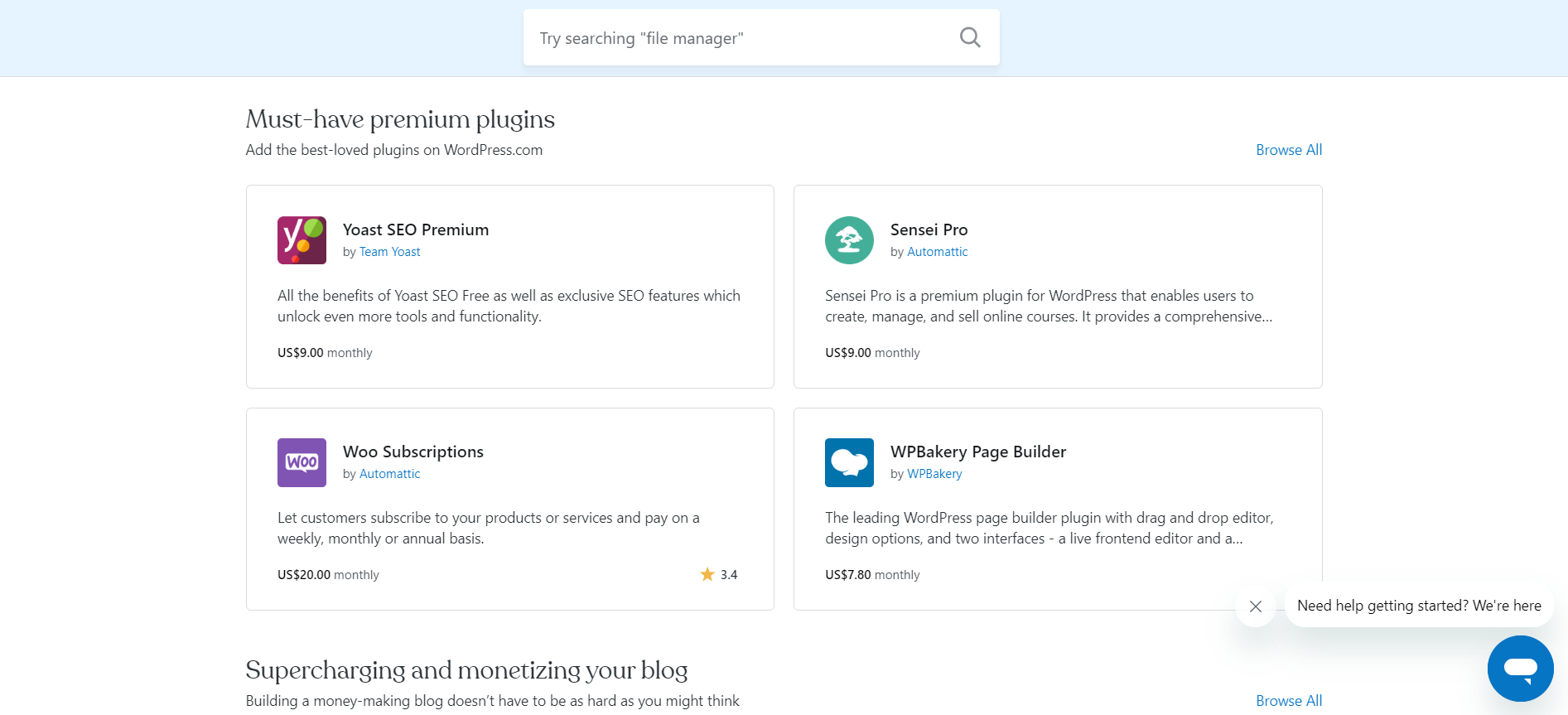
Marketing Features
Design FunctionalitiesRepresents how well each platform allows for creative design and customization of websites.Score Components:
- Template Variety (30%): Range and quality of design templates.
- Customization (30%): Flexibility and options for design alterations.
- User Interface (20%): Ease and intuitiveness of the design process.
- Responsiveness (10%): Adaptability to different devices and screen sizes.
- Innovation (10%): Unique design features and tools.
 8.0
8.0
 3.7
3.7
🏆
Overall Winner: WordPress
. WordPress stands out for its extensive marketing features, especially in SEO, blogging, and ads and promotions. Adobe Portfolio, while offering basic SEO tools and limited social media integration, lacks in email marketing, blogging, and ads and promotions.

|

|
|
|---|---|---|
|
SEO Tools |
|
Basic SEO features |
|
Email Marketing |
✓ (through plugins) |
|
|
Blogging |
|
|
|
Social Media Integration |
Plugins for direct linking, automatic posting, and social feeds display |
Limited |
|
Analytics and Reporting |
In-depth analysis via plugins like Google Analytics for WordPress |
Yes, users can use Google Analytics |
|
Ads and Promotions |
Support for Google Ads and ad management through various plugins |
|
Customer Support
Customer supportEvaluates the quality and availability of support options.Score Components:
- Response time (40%): Speed of support responses.
- Support quality (30%): Effectiveness and helpfulness of the support.
- Availability (20%): Range of support channels (phone, chat, email).
- Resource richness (10%): Quality of self-help and educational materials.
 5.0
5.0
 7.3
7.3
🏆 Winner: Adobe Portfolio
. In the comparison of WordPress vs Adobe Portfolio, Adobe Portfolio takes the lead with its more structured and accessible customer support. Adobe Portfolio offers a range of support options, including a comprehensive knowledge base, live chat, and phone support, which are particularly beneficial for users needing immediate assistance. The emphasis on self-service help is complemented by the availability of live support, making it a well-rounded option for creative professionals.
WordPress, on the other hand, lacks direct customer support due to its open-source nature. Users primarily rely on community forums, the WordPress codex, and support from hosting providers or plugin and theme developers. While this decentralized support system can be effective, it often requires more effort from users to find solutions, which can be a drawback for those seeking quick and direct assistance.
Security
SecurityLooks at the platforms’ security measures and data protection.Score Components:
- Data protection (40%): Safeguards for user and customer data.
- SSL and encryption (30%): Implementation of secure connections.
- Compliance (20%): Adherence to industry security standards.
- Regular updates (10%): Frequency of security updates and patches.
 6.7
6.7
 8.1
8.1
🏆
Winner: Adobe Portfolio
. Adobe Portfolio takes the lead in security with a score of 8.1 compared to WordPress’s 6.7. Adobe Portfolio implements comprehensive data protection measures aligned with major regulatory frameworks like the GDPR and U.S. state privacy laws. It also adheres to international data privacy frameworks, ensuring global data protection standards. Adobe’s security strategy includes proactive measures like vulnerability assessments and incident response teams, aimed at continuously improving security.
WordPress, on the other hand, provides numerous functionalities and resources to enhance website security effectively. Users can utilize multiple plugins to bolster security, such as those for site backups, monitoring, malware scanning, user activity tracking, permission control, and spam protection tools. However, the approach to private data storage and protection can vary depending on the hosting provider, which can be a potential security risk.
AI Capabilities
AI capabilitiesMeasures the effectiveness of AI-driven features and tools.Score Components:
- Automation efficiency (40%): Impact of AI on streamlining processes.
- Personalization (30%): AI-driven customization for users or customers.
- AI-Assisted design (20%): Role of AI in website design and functionality.
- Data analysis (10%): Use of AI in interpreting user data and analytics.
 6.1
6.1
 0
0

|

|
|
|---|---|---|
|
AI Builder |
AI Site Builder and Zita plugins available |
|
|
AI Ecommerce |
AI plugins like Conversios, Ochatbot, AI Power, GetGenie, Woowoo, WooCommerce Multilingual, Rank Math and Yoast SEO |
|
|
AI Content Generation |
AI Engine, GetGenie for content writing, and AI Power: Complete AI Pack |
|
|
Additional AI Features |
Wide range of AI powered plugins and tools |
|
🏆 Winner: WordPress
. WordPress, with a score of 6.1, utilizes its open-source nature to integrate with various AI plugins, enhancing its capabilities in ecommerce, content generation, and other areas. Adobe Portfolio, on the other hand, does not have any AI capabilities.
User Management
User ManagementAssesses the platforms’ capabilities in managing user roles, permissions, and accessibility.Score Components:
- Role Customization (40%): Flexibility in creating and defining user roles and
permissions. - Ease of Management (30%): User interface and tools for managing users.
- Access Control (20%): Effectiveness of access control measures for different user
levels. - Scalability (10%): Ability to manage a growing number of users efficiently.
 8.8
8.8
 3.0
3.0
🏆 Winner: WordPress
. WordPress offers a more comprehensive user management system compared to Adobe Portfolio.
- WordPress provides a range of user roles from Super Admin to Subscriber, each with different levels of permissions. Additional controls such as role management plugins and revision control offer further customization for specific editing rights and collaboration.
- Adobe Portfolio, on the other hand, only allows one user to build and edit a website, limiting its usability for teams or multiple contributors.
WordPress User Roles and Access Levels:
| Role | Description | Access Highlights |
|---|---|---|
| Super Admin | Manages the entire network in WordPress Multisite. | Network admin, manage sites, users, plugins, themes. |
| Administrator | Full access within a single site. | Manage plugins, themes, users, all posts/pages. |
| Editor | Manages and publishes content, including others’ posts. | Edit/publish all posts, manage comments, categories. |
| Author | Publishes and manages their own posts. | Write, edit, publish own posts, upload files. |
| Contributor | Writes and edits their own posts but cannot publish. | Write, edit own posts (no file uploads or publishing). |
Adobe Portfolio does not provide user roles and access levels as it only allows one user to build and edit a website.
Additional Features

|

|
|
|---|---|---|
|
SSL Certificate |
|
|
|
Custom Domain |
|
|
|
Free Custom Domain Included |
|
|
|
International Domains |
|
|
|
Mobile Responsive |
|
|
|
Page Speed |
|
|
|
Website Builder Mobile App |
|
|
|
Convert a Website To An App |
|
|
|
Website Analytics |
|
|
|
Multilingual Sites |
|
|
|
Multiple Users |
|
|
User Feedback
WordPress receives praise for its user-friendliness, cost-effectiveness, extensive themes and plugins, customization options, and supportive community. However, users mention technical challenges, security concerns, a learning curve, and a lack of direct support. Overall, it remains a widely used and versatile platform, especially beneficial for startups and small businesses.
Adobe Portfolio, while not reviewed on G2, is designed specifically for creative professionals. Its intuitive interface and seamless integration with Adobe Creative Cloud make it an attractive option for photographers, graphic designers, and artists. The platform’s focus on visual appeal and ease of use without coding knowledge is a significant advantage for those looking to build a professional online presence.
The making of this blog
We followed a clear, step-by-step process to write and research this article.
FAQ
Can I use WordPress or Adobe Portfolio for an ecommerce site?
Which platform is better for showcasing creative work?
How do WordPress and Adobe Portfolio compare in terms of ease of use?
What are the main differences in hosting and security between WordPress and Adobe Portfolio?
Can I manage multiple users with either WordPress or Adobe Portfolio?










